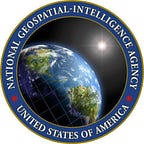At the center of innovation
NGA on the ‘prairie’
By David Geiger, Ctr., Xperience Communications, National Geospatial-Intelligence Agency
During the GEOINT Symposium last year, National Geospatial-Intelligence Agency Director Robert Cardillo highlighted that “…we must reject outdated ideas about the value of open-source data. We must embrace the imperative to release appropriate information on our unclassified network. We must do all of this — and we must do it smartly. We’ll go wherever necessary to create the service the world demands and our customers deserve.”
Supporting this challenge, NGA has been actively investing operations and manpower within what the IT industry has dubbed the Silicon Prairie. Much like our operations in Silicon Valley, the Silicon Prairie describes innovation occurring in cities such as St. Louis, Dallas, Denver, Sioux City and Chicago. St. Louis in particular, is quickly becoming a mini Palo Alto, where once-abandoned buildings near Washington University are now home to the most advanced coworking spaces.
One such building is the Cortex, home to the Innovation Center, or the CiC, a vibrant 200-acre innovation hub and technology district integrated into St. Louis’ historic Central West End and Forest Park Southeast residential neighborhoods. Founded in 2002, Cortex is the Midwest’s premier innovation hub of bioscience and technology research, development and commercialization, serving as the anchor of St. Louis’ growing ecosystem for innovative startup programs and established companies such as DuPont, Boeing Ventures, Centene, Express-Scripts, Nestle-Purina and MasterCard.
Across the Midwest — even during winter months — the new cash crop is high tech, and NGA’s presence in St. Louis has never been more important than it is now. As can be expected, larger, more established development firms are taking notice. Some of the city’s notable startups, such as Lockerdome, a social network, and Hatchbuck, a sales and marketing software as a service (SaaS) platform, also participate at the CiC.
More recently, San Francisco-based mobile payments company Square said it will hire 200 people at its new office in the Cortex innovation district in the Central West End.
Creating new business models
But NGA isn’t a venture capitalist with the ability to immediately invest millions of dollars like they do on an episode of TV’s “Shark Tank.” Instead, NGA leaders had to navigate developmental roadblocks, policies and security concerns in an effort to make Director Cardillo’s request a reality, “… we need to bring ideas to optimize our contract and acquisition processes.”
Despite the obstacles NGA wanted to strike while the iron was hot. St. Louis has seen growth in its tech start-up scene and has the venture capital dollars to prove it. The city was the fastest growing area for total funding for tech start-ups in 2014, according to CB Insights. From November 2013 through October 2014, funding in St. Louis-based tech start-ups increased 1,221 percent year over year. In 2014 venture capitalists invested about $71.3 million in 21 deals, according to data from Pitchbook, a firm that tracks private equity and venture capital investments.
“We are thrilled to see the innovation agenda defined by our founding partners continue to thrive and flourish,” said Dennis Lower, president and CEO of Cortex. “C2N, Orion, aisle411, Uber, OG Systems, CIC, Quiet Signal, Capital Innovators, iSelect, the Women’s Bakery, Sprouthood and many others — an entrepreneurial renaissance is happening in St. Louis, and Cortex is at ground zero.”
As a result, NGA has created solutions that are quite unusual when compared with our typical business model.
NGA created a program called The Innovative GEOINT Application Provider Program, or IGAPP, a revolutionary business model providing an open-source environment for the government to engage directly with startups, academia and midsized software firms. By simplifying the federal government acquisition requirements, IGAPP removes the barriers that have historically stymied most private-sector firms or businesses. Through vendor opportunity packages, IGAPP delivers the needs of the intelligence and defense communities directly to the developers, and removes the guesswork — ensuring developers are creating meaningful apps.
Since the launch of IGAPP more than two years ago, NGA has coordinated with more than 40 IGAPP-approved vendors that distributed more than 50 GEOINT-tailored products in the GEOINT AppStore. This revolutionary program not only provided applications NGA’s partners and customers actually need, but reduced the acquisition time from 18 months to less than four weeks.
Extending the realm of the possible
NGA isn’t alone in this endeavor; Arch Grants, a nonprofit organization, accelerates economic development by providing $50,000 equity-free grants
and pro bono support services to entrepreneurs who locate their businesses in St. Louis. Through its competitive Global Startup Competition, Arch Grants retains and attracts the most innovative entrepreneurs to the St. Louis region.
These programs, and the continued efforts of NGA, are an aggressive effort to inspire the next generation of employers, civic leaders and philanthropists for St. Louis. As the agency continues to create the infrastructure that supports its development in the open environment, it will be exciting to see what new and unusual developments these new-found relationships with the private sector will deliver to users in the IC, NSG and ASG – and forever change our perspective regarding the realm of the possible.
